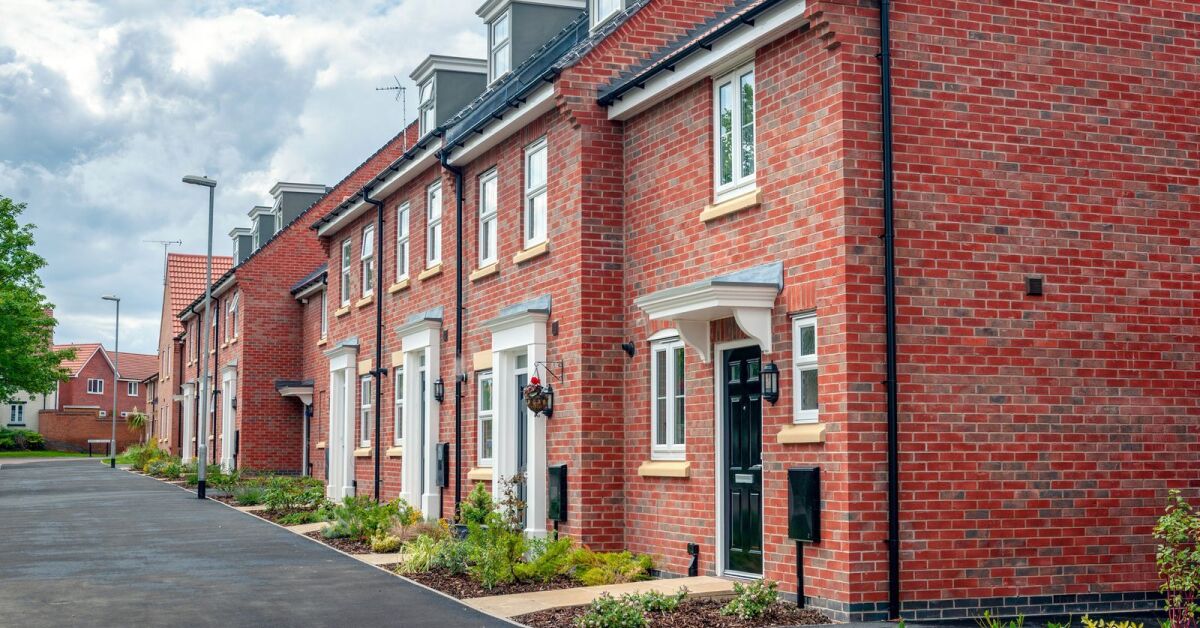What’s Happening With UK House Prices? Latest Market Moves and 2025 Forecasts

The UK property market is once again at the centre of debate. With affordability stretched, mortgage rates still elevated, and policy changes looming, buyers and sellers alike are asking the same question: where are house prices really heading in 2025 and beyond?
The answer, according to the latest data and expert forecasts, is a mixed one. While the market has stabilised and prices remain close to record highs, growth is slowing and the outlook varies sharply depending on region, property type and buyer profile.
Prices Still Rising – But More Slowly
The most authoritative measure of housing values, the HM Land Registry’s UK House Price Index (HPI), reported that average UK property prices increased 0.3% between June and July 2025. On an annual basis, prices were up 2.8%, bringing the typical home’s value to around £270,000.
This is still growth, but it represents a cooling from June’s revised 3.6% annual increase. The Land Registry’s dataset is the most comprehensive because it includes both cash and mortgage-financed purchases, though it is published with a six-week delay compared with lenders’ indices.
By nation, Northern Ireland recorded the strongest annual growth at 5.5%, followed by Scotland (3.3%), England (2.7%) and Wales (2%). Within England, the North East led the pack with a 7.9% yearly rise, while London lagged with just 0.7% growth.
The figures confirm what many buyers and agents are seeing on the ground: a market that is stable, but not booming.
Market Activity Picking Up After Stamp Duty Changes
Buyer activity has been subdued in recent months, particularly after the latest stamp duty reforms, which created short-term uncertainty. But according to estate agents, viewings and enquiries have started to pick up again as the dust settles.
Still, sentiment remains fragile. The Royal Institution of Chartered Surveyors (RICS) survey in August revealed that confidence in price growth was at its weakest since late 2023. Agents still expect modest increases over the next 12 months, but expectations are far more cautious than they were at the start of the year.
This uncertainty is reflected in the forecasts from major consultancies:
Savills has trimmed its 2025 outlook to 1% growth (down from 4%).
Knight Frank has cut its forecast from 3.5% to 1%.
Both cite the lingering effects of stamp duty changes, affordability challenges and pre-Budget jitters.
Lenders Show a Split Picture
Mortgage lenders’ indices provide a timelier but narrower view of house prices. Nationwide reported a small 0.1% decline in August, while Halifax recorded a 0.3% monthly rise. Annual growth rates, however, were broadly consistent at 2.1% and 2.2% respectively.
Both lenders, as well as the Land Registry, agree on one key point: prices remain close to record highs. Nationwide pegs the average at £271,000, Halifax at £299,000, and the Land Registry at £270,000.
For buyers, this means affordability remains stretched, particularly for first-time entrants to the market.
Affordability: The Key Constraint
Mortgage costs remain one of the biggest barriers. Even though fixed rates have eased slightly since last year’s peaks, they are still much higher than pre-2022 levels.
“Fixed mortgage rates have drifted lower over the summer, but borrowing costs remain significantly higher than those faced by buyers just a few years ago,” said Karen Noye, mortgage expert at Quilter.
Yet there are reasons for cautious optimism. Robert Gardner, Nationwide’s chief economist, expects borrowing costs to moderate over the coming quarters if interest rates continue to fall. “This should support buyer demand, especially since household balance sheets are strong and labour market conditions are expected to remain solid,” he explained.
Asking Prices Under Pressure
While sold prices have held steady, asking prices tell a slightly different story. Rightmove data shows that asking prices were 0.1% lower in September 2025 compared with a year earlier, despite ticking up 0.4% month-on-month.
The average asking price is now £370,257, about £500 less than in September 2024. The fall is most pronounced in southern England, where the number of homes on the market is up 9% compared with a year ago.
It is taking longer to sell too: homes in the South take an average of five days longer to find a buyer compared with the North and Wales.
“Sellers who reduced their price expectations over the summer are now creating more realistic conditions for sales, which is keeping things moving,” said Matt Giggs, founder of estate agency The Giggs Group.
Regional Hotspots and Laggards
The Land Registry’s July figures underline the widening gap between regions:
North East: +7.9% annually, the strongest growth in the country.
Yorkshire & Humber: +3.9% annually.
North West: +4.8% annually.
London: +0.7% annually, the weakest growth.
The South East also underperformed with just 1.2% growth year-on-year, while the South West fared slightly better at 1.4%.
Detached and semi-detached properties continue to see the strongest appreciation, reflecting demand from family buyers. By contrast, flat prices have stagnated, with London flats even recording small annual declines.
The Forecast Beyond 2025
While 2025 looks set to be a year of modest growth at best, forecasters expect momentum to build from 2026 onwards.
Savills projects:
4% growth in 2026
6% in 2027
6% in 2028
5.5% in 2029
Knight Frank is more conservative but still expects a pickup:
3% growth in 2026
4% in 2027
4.5% in 2028
5% in 2029
Both agencies cite anticipated wage growth (around 22% between 2025–2029), stronger economic conditions, and lower borrowing costs as key drivers.
Crucially, the Bank of England has signalled greater flexibility on mortgage lending rules. Under revised affordability tests, a larger share of buyers may be able to borrow above the old 4.5x income cap, potentially boosting first-time buyer demand. Nationwide estimates this could add £28,000 to typical borrowing capacity.
Will Stamp Duty Be Replaced?
Perhaps the biggest wild card is government policy. With the Autumn Budget approaching, speculation is swirling about possible overhauls to property taxation.
Among the rumoured proposals:
Replacing stamp duty with an annual property tax for homes worth over £500,000.
Scrapping capital gains tax exemptions on primary residences above £1.5m.
Imposing National Insurance contributions on landlords’ rental income.
If implemented, such measures could significantly reshape the market, particularly at the higher end. “There are big transitional risks and uncertainties of how this might distort the market,” said Richard Donnell, executive director at Zoopla.
Of course, these remain speculative. Many industry voices caution buyers and sellers against making knee-jerk decisions based on rumours.
Outlook: Stability With Regional Pockets of Strength
Taken together, the data paints a picture of a market that is resilient but restrained. Prices are edging higher in much of the UK, but gains are patchy and concentrated in northern regions. Affordability pressures continue to cap demand in London and the South, while first-time buyers remain squeezed by borrowing costs.
Still, with interest rates expected to soften, wages set to rise, and lending conditions easing, the medium-term outlook is brighter. By 2026, the stage may be set for a stronger upturn in both prices and transaction volumes.
For now, however, buyers and sellers face a market of modest growth, regional divergence and plenty of uncertainty—making careful planning more important than ever.
Call us: 0207 183 4547
Or email: thelegalteam@parachutelaw.co.uk
Contact us today
Related Articles:
Who Gets What? Protecting Your Share of the Home if You’re Not Married


